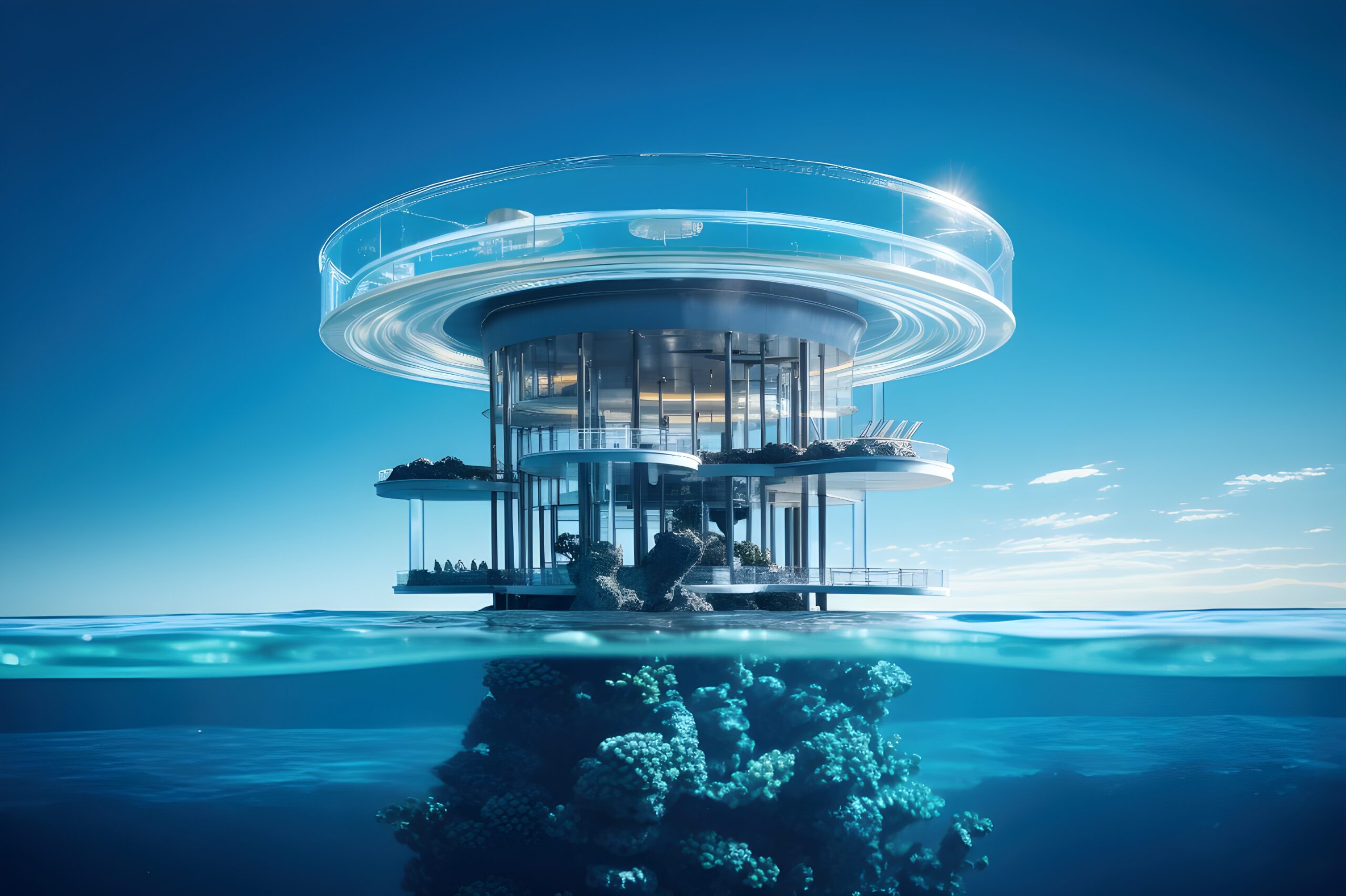The world’s seas hold immense undiscovered assets, from oil and gas stores to sustainable power potential.
As global energy demands rise and technology advances, deep offshore technology has become a critical field, enabling us to explore and harness these resources like never before.
But what exactly is deep offshore technology, and how is it shaping the future of ocean exploration? In this article, we’ll dive into the innovations, challenges, and future prospects of this fascinating field.
What is Deep Offshore Technology?
Profound seaward innovation alludes to the apparatuses, frameworks, and strategies used to investigate and separate assets from deepwater conditions, normally at profundities of 1,000 feet or more.
These advancements are fundamental for enterprises like oil and gas, environmentally friendly power, and submerged mining.
They incorporate high level penetrating frameworks, subsea advanced mechanics, drifting stages, and state of the art observing gear.
The progression of significant toward the ocean development has been driven by the fatigue of successfully open inland and shallow-water resources.
Today, more than 30% of worldwide oil creation comes from profound seaward fields, with some found in excess of 10,000 feet underneath the sea surface.
This shift toward deepwater exploration has unlocked new opportunities but also introduced significant technical and environmental challenges.
Key Innovations in Deep Offshore Technology
The profound seaward industry has seen momentous progressions as of late. Here are probably the most earth shattering developments:
1. Autonomous Underwater Vehicles (AUVs)
AUVs are automated frameworks that work autonomously submerged, performing errands like planning the ocean bottom, reviewing pipelines, and gathering information.
These vehicles are outfitted with cutting edge sensors and cameras, permitting them to explore outrageous profundities and brutal circumstances with accuracy. AUVs have altered profound seaward activities by decreasing the requirement for human intercession and further developing wellbeing.
2. Floating Production Systems
Floating production systems, such as Floating Production Storage and Offloading (FPSO) vessels, are used to extract and store oil and gas in deepwater environments.
These frameworaks are exceptionally flexible and can work in far off areas, making them ideal for profound seaward tasks. Late headways have worked on their soundness, proficiency, and natural execution.
3. Subsea Processing
Subsea handling includes isolating oil, gas, and water straightforwardly on the seabed, as opposed to on a surface stage.
This innovation lessens the requirement for broad foundation and limits natural effect. It likewise permits administrators to get to assets in ultra-deepwater fields that were recently thought to be uneconomical.
4. Advanced Drilling Techniques
Deepwater drilling has become more efficient and safer thanks to innovations like dynamic positioning systems and dual-gradient drilling.
These advancements empower exact command over boring tasks, even in testing conditions. Furthermore, the utilization of expandable tubulars has decreased the expense and intricacy of deepwater wells.
5. Renewable Energy Solutions
Profound seaward innovation isn’t just about oil and gas. It’s likewise assuming a vital part in the improvement of seaward wind ranches and sea energy frameworks.
Floating breeze turbines, for example, can be conveyed in deepwater locales where wind speeds are higher and more unsurprising, opening monstrous practical power potential.
Challenges in Deep Offshore Operations
While profound seaward innovation has opened up additional opportunities, it likewise accompanies huge difficulties:
1. Extreme Environmental Conditions
Working in deepwater conditions implies confronting outrageous tensions, low temperatures, and erratic climate.
These circumstances can strain gear and posture dangers to laborers. For instance, the strain at 10,000 feet beneath the surface is more than 4,500 pounds for each square inch (psi), requiring vigorous and tough innovation.
2. High Costs
Profound seaward activities are staggeringly costly, with costs frequently running into billions of dollars.
The intricacy of activities, the requirement for particular hardware, and the dangers implied all add to these significant expenses.
Accordingly, organizations should cautiously gauge the expected returns against the venture required.
3. Environmental Concerns
Profound seaward activities can have huge natural effects, from oil slicks to disturbances in marine environments.
The 2010 Deepwater Skyline calamity featured the dangers related with deepwater penetrating.
From that point forward, the business has gained ground in further developing security and supportability, yet challenges remain.
4. Regulatory and Political Hurdles
Profound seaward ventures frequently face administrative and political difficulties, especially in ecologically touchy regions.
Acquiring grants, following guidelines, and tending to public worries can postpone activities and inflate costs.
The Future of Deep Offshore Technology
The eventual fate of profound seaward innovation is splendid, with a few energizing patterns not too far off:
1. Artificial Intelligence (AI) and Big Data
Computer based intelligence and enormous information are changing profound seaward tasks.
These advances empower continuous observing, prescient support, and upgraded navigation.
For instance, computer based intelligence fueled frameworks can investigate information from sensors to identify potential hardware disappointments before they happen, lessening free time and expenses.
2. Renewable Energy Expansion
As the world movements toward cleaner energy sources, profound seaward innovation will assume a pivotal part in the improvement of seaward wind ranches, wave energy converters, and flowing energy frameworks.
Drifting breeze turbines, specifically, are supposed to see huge development before very long.
3. Deep-Sea Mining
The interest for uncommon earth metals and minerals is driving interest in remote ocean mining.
Advancements like remote-worked vehicles (ROVs) and independent penetrating frameworks are being created to separate these assets from the sea depths.
In any case, this industry should offset financial potential with ecological obligation.
4. Enhanced Safety and Sustainability
The business is progressively centered around further developing wellbeing and maintainability.
Advancements like carbon catch and capacity (CCS) and zero-release frameworks are assisting with lessening the ecological effect of profound seaward activities.
Moreover, stricter guidelines and industry norms are driving the reception of best practices.
FAQs About Deep Offshore Technology
1. What is the difference between shallow and deep offshore drilling?
Shallow offshore drilling occurs in water depths of up to 1,000 feet, while deep offshore drilling takes place at depths of 1,000 feet or more.
Deepwater drilling requires more advanced technology and equipment due to the extreme conditions.
2. How does deep offshore technology impact the environment?
Profound seaward tasks can have ecological effects, for example, oil slicks and disturbances to marine biological systems.
Notwithstanding, the business is attempting to relieve these impacts through superior wellbeing measures and manageable practices.
3. What are the benefits of deep offshore technology?
Profound seaward innovation empowers admittance to significant assets, upholds energy security, and drives mechanical advancement.
It likewise assumes a vital part in the improvement of environmentally friendly power arrangements.
4. What is the future of deep offshore technology?
The future of deep offshore technology includes advancements in AI, renewable energy, deep-sea mining, and sustainability.
These trends will shape the industry and contribute to a more sustainable and efficient energy future.
Conclusion
Deep offshore technology is at the forefront of ocean exploration and resource extraction.
From cutting edge headways like free lowered vehicles and floating breeze turbines to the challenges of unbelievable circumstances and massive costs, this field is both many-sided and spellbinding.
As we prepare, significant offshore advancement will continue to propel, driving progression in energy creation, normal legitimacy, and mechanical turn of events.
What do you suppose what’s in store holds for profound seaward innovation? Share your contemplations in the remarks beneath!



